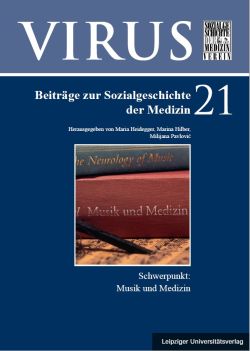
VIRUS Band 21, pp. 121-140, 2023/03/22
Schwerpunkt: Musik und Medizin

This contribution explores musical practices in German-speaking asylums in the first half of the nineteenth century. Using the example of the provincial mental asylum in Hall in Tyrol, established in 1830, it sheds light on the presence of musical sound in ‘silent’ archival sources. Therefore, the article investigates the question of what we can actually learn about the fading sounds and musical experiences of psychiatric patients. Firstly, it focuses on the institution as a space for music performance; secondly, it discusses conceptual framings for music therapy in early psychiatry up to 1850. A third thread of discussion derives from a close reading of contemporary medical literature and concerns the ambivalent perceptions of the effects of music. While this approach focuses more on the perspectives of physicians, the fourth section of this paper takes a patient-oriented perspective. Using the example of Tyrol, it examines the traces of music in medical records. The article therefore emphasizes a desideratum of research, in which it draws attention to musical patients and their instruments.
Keywords: Early psychiatry, musical practice, sounds, therapeutic concepts, patient files, patient-oriented view, 19th century